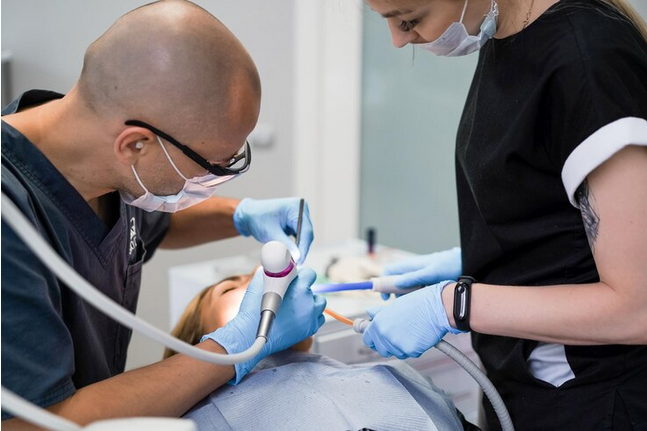In the realm of dental health, bone grafting has emerged as a pivotal procedure, unlocking new possibilities for those seeking to restore their smiles. This comprehensive guide delves into the intricacies of bone grafting for teeth, shedding light on its importance, the procedure itself, recovery, and potential complications.
Understanding the Importance of Bone Grafting
Before delving into the specifics of bone grafting, it's crucial to comprehend why this procedure is deemed essential. The jawbone provides a foundation for teeth, ensuring stability and support. However, tooth loss, trauma, or other oral health issues can lead to bone deterioration. When the bone structure weakens, it poses challenges for dental implants or other restorative treatments.
Bone grafting becomes imperative in such cases, serving as a foundation for dental implants. This procedure not only restores the structural integrity of the jaw but also enhances the aesthetic appeal of the smile. Without a healthy jawbone, achieving a natural-looking and long-lasting dental restoration becomes a formidable task.
The Bone Grafting Procedure: A Step-by-Step Overview
Bone grafting is a meticulous process that involves the transplantation of bone tissue to the jaw, creating a stable environment for dental implants or other restorative interventions. Here's a step-by-step overview of the procedure:
- Evaluation and Planning: Before the actual grafting, a thorough examination of the patient's oral health is conducted. This includes assessing the extent of bone loss and determining the appropriate grafting technique.
- Graft Material Selection: Various graft materials are available, ranging from autografts (patient's own bone) to allografts (donor bone) and synthetic materials. The choice depends on factors like the extent of bone loss, patient preferences, and the dentist's recommendation.
- Anesthesia: The patient is administered local or general anesthesia to ensure a pain-free experience during the procedure.
- Graft Placement: The selected graft material is carefully placed in the targeted area, often secured with biocompatible screws or other fixation devices. The graft serves as a scaffold for the natural bone to regenerate over time.
- Closure: Once the graft is securely in place, the surgical site is closed with stitches. Proper closure is crucial for the success of the grafting process.
- Recovery: Post-surgery, patients are advised on aftercare, including pain management, oral hygiene, and dietary restrictions. Regular follow-up appointments monitor the progress of bone regeneration.
Navigating the Road to Recovery
The recovery period following bone grafting is a critical phase that demands attention and adherence to post-operative instructions. Patients may experience some discomfort, swelling, or bruising, which is typically managed with prescribed medications. It's imperative to maintain excellent oral hygiene during this time to minimize the risk of infection and support optimal healing.
Dietary considerations are also paramount during the recovery phase. Patients are often advised to stick to soft foods to avoid unnecessary strain on the healing site. Adequate rest and avoiding strenuous activities contribute significantly to a smooth recovery process.
Regular follow-up appointments with the dentist are scheduled to monitor bone regeneration and address any concerns that may arise. Patience is key during this period, as the full integration of the graft with the existing bone takes time.
Potential Complications and Precautions
While bone grafting is a generally safe and effective procedure, it is not without potential complications. Patients must be aware of these risks and take necessary precautions. Some common complications include infection, graft rejection, or inadequate bone regeneration.
To mitigate these risks, strict adherence to post-operative instructions is crucial. Any signs of infection, such as increased pain, swelling, or discharge, should be promptly reported to the dentist. Patients should refrain from smoking, as it can impede the healing process, and follow dietary restrictions to prevent unnecessary strain on the graft site.
Conclusion: A Radiant Smile Awaits
In conclusion, bone grafting for teeth is a transformative procedure that opens doors to a radiant and confident smile. Understanding the significance of bone grafting, the intricacies of the procedure, and committing to a diligent recovery process are pivotal steps in this journey.
As advancements in dental science continue, bone grafting techniques evolve, offering even more tailored solutions for individuals seeking to reclaim their oral health. With a commitment to oral hygiene, regular dental check-ups, and a collaborative approach with skilled professionals, the path to unlocking smiles through bone grafting becomes a reality. So, embrace the journey, and let your smile radiate with newfound confidence and vitality.





Comments